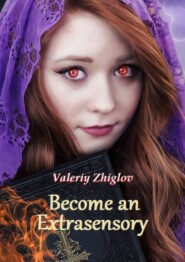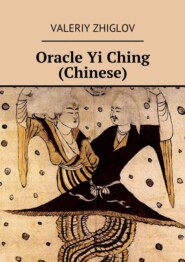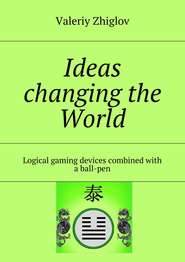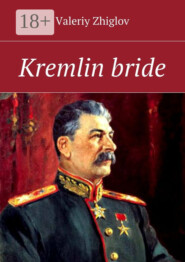По всем вопросам обращайтесь на: info@litportal.ru
(©) 2003-2024.
✖
Buddhist Tarot
Настройки чтения
Размер шрифта
Высота строк
Поля
Valeriy Zhiglov
The book tells about the Buddhist Tarot universal card deck, the sheets of which, in combination with classical data on taromancy and astrology, comprise the information about the Buddhist gods’ pantheon, which corresponds to them. Collecting ancient esoteric knowledge in one card deck expands the information content and allows users to analyze multiple aspects of every phenomenon that they consider.
Buddhist Tarot
Valeriy Zhiglov
Illustrator Inna Yeryomkina
© Valeriy Zhiglov, 2017
© Inna Yeryomkina, illustrations, 2017
ISBN 978-5-4474-9794-1
Created with Ridero smart publishing system
Foreword
«Be aware: if you do not see something,
that in no way means it does not exist»
Shoshana Kohen
We are living in amazing time of millennium switching, when the humankind should clear the new height in its development. This is the time, when we are given a chance to join in the ancient knowledge, which for long time has been available to very few Initiates. So it was with Tibetan Buddhism, so it was with Dao’s practices that came to us from China; the same happened to teachings of the American Indians, with Qabalah, which ultimately became available for a wider community of those who wish to know the ancient Spiritual Wisdom.
Regardless the fact that the World religion has multiple branches, its Divine root is universal. Since almost forever ago, people of different religious cults in fact worshiped the same Celestial Symbols and the same Laws of the Universe, but losing the keys for decrypting the Secret Knowledge resulted in the Celestial Truth hiding its original meaning and becoming unavailable for the adherents. The situation became even worse, because different religions associated the Secret Knowledge with different symbols, which with time became absolutely unknowable to the great majority of modern people. Therefore, those who study religions are surrounded by a myriad of unclear symbols; what is even worse, the people totally forgot that those symbols originally had different meanings, very little in common with what they are now claimed they are.
Here is what Nicholas Roerich told on the matter (Shambhala. The Roerichs’ International Center. – M.: Bisan-Oasis, 1994):
«It seems impossible that people could willingly forget the best possibilities. People lost the Keys for Rigveda symbols. People forgot the meaning of Qabalah. People mutilated the wonderful word of Buddha. People lowered with gold the Divine simplicity of Jesus Christ. And they forgot, they forgot the best Keys of the Gates».
«People lose easily, but how they find? Ways to find give one the hope. Now, when time is really running out, people – still a few of them – start remembering treasures they possess for long time. Keys of Trust start rattling by the belt. Dreams distinctively and imperatively call to the abandoned yet still existing Beauty.
Just accept. Just take, and see how your inner life changes. How the Spirit will thrill in the mind of unlimited opportunities. How easily the Beauty will enlighten the Temple, and a palace, and every fireplace, where a human heart is warmed».
Similar thoughts were expressed by Papus in his book «Tarot and Astrology for Initiates» (M.: ACT, Astrel, 2006):
«Every ancient teaching priest was the Initiate, and knew for certain there is only one religion, while different cults are only to present this one religion to different nations, in accordance with their specific traditions. Therefore, our religious discussions about the supremacy of one religion over others would have been very funny to those ancient initiated priests. They would have hardly even imagined that people with intellect could ever deny the unity of all cults in one fundamental religion.
Now every cult has its own traditions, its own Book, its own Bible, which teach to the unity of all religious faiths, regardless whatever difference may exist in traditions of different lands; but only those, who know how to read, are taught. Those, who possess the Key, would see that all those religions teach the same, but the Key is believed to be lost now.
There is no doubt, sectarianism became the reason for the total loss of the Secret Teaching, which granted access to the Key for the unity, and an attempt to re-discover the synthesis in various religions shall take many efforts from us all.
It is the Tarot card deck that may be considered the Bible of Bibles, combining the book of Hermes Trismegistus, the book of Adam, the book of the original Teaching of the most ancient civilizations of Atlantis, all together forming the basis for synthesized Teachings of all ancient nations with no exception. In Tarot cards, where an ordinary person only sees entertainment, a Thinker would recognize the Key for the Uniform tradition, forgotten long ago.
Therefore, what we need to do is to propose the Key, based on the synthesized (i.e. universal) formula. We only can present a tool, which those who need the Knowledge, may use at their own discretion. We are sure they realize how useful our efforts, as well as their own efforts, could be».
I was surprised, when I studied the Pantheon of Buddhist Gods, and I saw the association with values of the Tarot Cards Major Arcanum, which are known to be presented to the human civilization by Hermes Trismegistus. That is why I decided to make an attempt to create the universal Tarot card deck, in combination with the tantric Buddhist art.
Because the new universal Tarot card deck comprises the spiritual teachings from the East, Buddhist art and Buryat iconography were used for reflecting it better. Buddhist art and Buryat iconography descend from tantric Buddhist art of Tibet, where it came from India.
Tibetan Thangka style of painting is known due to its supreme decorative softness that is inherited from several school styles: Kadam, an early classical school with the style characterized by simplicity, spatiality, rich basis; Menri, a classical school founded later, in XV century by Menla Dondrub, a painter, whose style combines simplicity and spatiality with abundant details; new menri (also known as mensa), representing the further development of the menri school by the end of the XVII century, with the style, which is almost baroque and unbelievingly beautiful, with curved lines and with the space full of flare; the school of karma gardri, associated with the 8
Karmapa, Mikyö Dorje, and this style is under influence from China, as characterized by the clean and precious manner of drawing, multiple stylized details of landscapes, delicate color palette (Chogyam Trungpa, Rinpoche. Visual Dharma: The Buddhist Art of Tibet. Shambhala, Berkeley and London, 1975, p. 142).
Inside the religious and cultural entire, which is the Tibetan Buddhism of the XVIII century, under Qing emperor protection, the art of that period mixes styles, demonstrating the trend towards some international style, known yet during the epoch of Ngawang Lobsang Gyatso, the 5th Dalai Lama (1617 – 1682). M. Lerner was the first to use the phrase «the international style», in the article «An International Style» wooden mandoria» (H. Karmay. Early Sino-Tibetan Art. Warminster, 1975, p. 128).
Material quality of the style, throughout the entire Buryat iconography development period, proves that learning canons, in combination with marvelous implementation, resurrect old cultural values in new vividness.
Major Arcana
The Zero Tarot Card
0.The Zero Tarot Card is named «The Fool». Regardless its seemingly unserious name, this Card is one of the key Cards of the Major Arcanum, and it is associated with the First Card, or a Magician, not due to a simple coincidence. This Card is outside the circle of the Major Arcanum. Emerging from the Zero point, and directed to all the four corners of the Earth, is the entire our visible material world, which is created by the four elements – Fire, Air, Water, Earth. Each of the four elements consists of 16 transitional steps, reflected via the corresponding 16 Cards. The entire Card deck is formed by 64 Cards, which symbolize the human life picture in the Minor Arcana of the Tarot Cards.
Manly P. Hall emphasized the occult importance of this Card, saying that the Zero Card has been linked to the material Universe because the mortal sphere is the World of unreality. The lower Universe (it is where we are), like the mortal body of man is but a garment, a motley costume, well linked to cap and bells. Beneath the garments of the fool is the Divine substance, however, of which the jester is but a shadow; this world is a Mardi Gras – a pageantry of Divine sparks masked in the garb of Fools.
This card symbolizes Genesis, Spirit, Creation at the very early unsteady stages, or joyful, naïve, inexperienced and egocentric creature with passion for adventures, artistry, wastefulness and restlessness. Combined with favorable Cards, it is the undeserved benefit, whereas with the Judgment Card it predicts troubles or even a criminal case, which is not necessarily inevitable with the Nine of Cups, but the troubles are inevitable with the overturned King of Swords, Five of Wands. In the overturned position, this Card symbolizes carelessness, uncertainty and reluctance.
Astrological association is the planet Uranus.
Pictured on this Major Arcanum Card is Sagaan Ubgen, who belongs to the Pantheon of Buryat Buddhist gods. Buryat people also call him «The elder White», listing him among the «masters of earth», ancient chthonic creatures, introduced into the Buddhist iconography. In ritual texts, he is described as the patron of flora and fauna, linked with the magic of fertility, abundance and other benefits of the soil. In iconography, the face of this god has the face that is typical for a totemic mask that personifies moral virtues. The association between Sagaan Ubgen with «the long life» and Buddha Amitāyus, pictured atop, is more recent, ascending to his sanctification during the reign of Qianlong Emperor (1736—1795). In Tibet, he is one of «six holders of long life».
The First Tarot Card
1. The First Tarot Card is «The Magician». It symbolizes Adam Kadmon of the humankind, who had three heads, according to the legend. The material body of a modern human in some way also has three heads, placed one above another – the head, the torso and the pelvis, each having its own analogs. For example, the analogs of eyes and mouth in a torso are breasts and the navel. As we know, before birth, the fetus is fed via navel cord, or the primeval mouth. Each of the three heads has its own primeval «brain»; in a torso, it is within the nerve tissue of the solar plexus, also known as the abdominal brain. By activating our primeval brain of the lower heads, and by opening one’s chakras, we are able to access the telepathic communication channels to contact others at large distances, and to contact the Spiritual World. Please, read more on the matter in my new book «Learning telepathy in 10 minutes».
Вы ознакомились с фрагментом книги.
Приобретайте полный текст книги у нашего партнера:
Приобретайте полный текст книги у нашего партнера:











